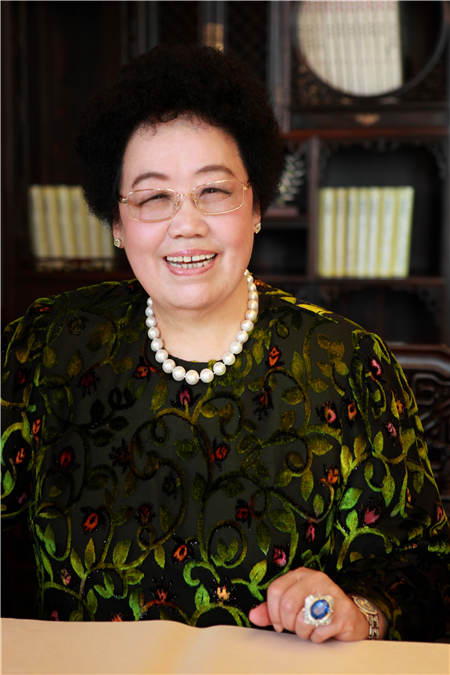 |
|
Chan Laiwa |
Not just some replica
Since the replication is in miniature, it is reasonable that some may question its value.
Lyu Zhangshen, curator of the National Museum of China, who majored in architecture and has a special love for Beijing's old gates and watchtowers, says: "These are exquisite replicas of great architecture that can be called art."
Lyu compared the city wall model to one of the all-wood Buddha tower in Yingxian county, Shanxi province. The tower was built in 1056 and is now a world heritage site, but the model is from the 1950s. However, the model has been collected by the national museum.
"Madame Chan's models measure up to that standard. From the choice of material to the level of craftsmanship, they evoke the beauty of the original structures and also exhibit the finesse of the carvings themselves."
The national museum has already selected Anding Gate (Gate of Secured Peace) and watchtower and the Prayer Hall of the Temple of Heaven for display.
Liu Dake, a top scholar in ancient architecture and preservation, offered his in-depth analysis: "There are different ways of building models. The sceneries used for movies and television drama may look good, but they usually cannot stand closer inspection. Models for real estate projects or many museum displays are usually better crafted, but again they are not up to my standard."
When Liu was first consulted on this project, he asked that it possess the value absent from most models, that is, it should be backed up with scholarly research and achieve the potential to be collectibles with historical significance.
"Simply put, the models should have the function of a 3-D blueprint, with attention to all details," he says. "If you blow it up 10 times, it should be exactly like the original structures. Just look at the row of small animals on each eave, and you'll understand they deserve a whole book in explanation. Even those who have made a study of the subject may not be able to explain all the differences."
The replicas, he says, "are all accurate to every detail".
Yan Chongnian, a renowned historian specializing in Qing Dynasty study who was also consulted on the project, explained the choice of the scale.
"In the old days people did not use blueprints for architecture. The knowledge was handed down from master to apprentice. When Taihe Hall in the imperial palace was burned down in 1695, Liang Jiu, a carpenter who had pleaded with his master for the knowledge, used a scale model for reconstruction. That scale, 1:10, was adopted by Madame Chan for her red sandalwood replicas."
As much of the real structures were destroyed only in the last century, graphic records were in abundance. For those details that were undocumented, Liu says they could be easily inferred because the Ming (1368-1644) and Qing eras followed convoluted but strict protocols for the building of the capital city.
On top of that, everything was hand-crafted-and by those who have the best experience in the field. Chan herself was not bothered by the fine line between art and craft. For her, it is a labor of love-actually two passions fused into one, the love of rare wood and that of her home city.
|
|
|
|
|
|
|
|
